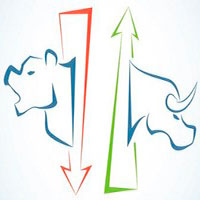Let’s chill from charts and read about the world's greatest traders who affected markets and left a mark on trading history. Not everything is simple about traders’ success but also about the hundred of past losses. Their lives are colored by both triumph and drama and surrounded by money, speculations, and fortune. We have prepared a list of the most famous market makers, including legendary traders of history and modern traders of our days. Learning from mistakes, thinking ahead, and being flexible has helped them become successful traders. So read the article to inspire yourself for big deeds.
George Soros
George Soros, aka "the man who broke the Bank of England," was born a Jew in Hungary in 1930, survived the Holocaust, and fled the country then. He is one of the most popular and famous traders worldwide. In England, Soros worked as a waiter or railway porter before he graduated from the London School of Economics. This finally led him to the banking world when he became a merchant banker at Singer and Friedlander.
With his father's help, he moved to the US to work at a Wall Street Brokerage firm. After his successful results at various firms, George established his hedge fund in 1970 called "Quantum." Here he rose to fame.
In 1992, Soros made a huge bet against the British pound and earned $1 billion in just 24 hours. Quantum accumulated 3.9 billion pounds, and Soros borrowed more to raise a total of 5.5 billion pounds. But the British pound started to fall. And Soros shorted all 5.5 billion pounds against the German Mark on September 16, also known as Black Wednesday. This helped to push down the currency’s price and forced the UK to crash out of the European Exchange Rate Mechanism. It became one of the quickest billion dollars anyone has ever made and one of the most famous trades ever taken, which later became known as “breaking the Bank of England.”
Jesse Livermore
The life of Jesse Livermore might be a base for a movie story. Born in 1877, he was destined to be a farmer but ran away from home to become a billionaire. His story is surrounded by money, mistresses, bankruptcy, and scandals. At an early age, Jesse Livermore learned to read and write, was interested in news and economics, and even could analyze prices. With experience, he mastered spotting trend reversals and popularized modern technical analysis. Livermore was one of the first who used stop losses, a risk-management tool still used by traders today.
Jesse made his first $250 000 shorting stocks just before the San Francisco earthquake. In 1925, he earned $3 million shorting wheat. Then, he made around $100 000 in profits selling short the US stocks before they crashed in 1929. Being one of the wealthiest and most successful traders of his time, Jesse got his moniker “the boy plunger.”
However, Jesse passed through several bankruptcies. He managed to make a return to the market in the first two cases, but the third bankruptcy was fatal. He made a mistake and lost all his money in 1929.
Combined with family tragedies, stress, and other failures, Jesse Livermore realized that he might never trade the same again. In 1940, he committed suicide by shooting himself. By the way, his son, Jesse Livermore Jr., also fell into the habits of his alcoholic mother and killed himself in 1975 after shooting his beloved dog while drunk and attempting to shoot a police officer.
William Delbert Gann
If you are a trader who practices technical analysis, you must have heard the name of W.D. Gann and his trading theory. William Delbert Gann was born in 1878 in Texas, the first of 11 children in a poor cotton-farming family. He neither graduated from grammar school nor attended high school because his parents expected him to work on the farm. Gann believed the Bible was the greatest book and got most of his education from it. His writing style is saturated with mystery, esoteric, and indirect style that many find difficult to follow.
However, Gann created powerful technical analysis tools, including Gann Angles, Hexagon, Circle of 360, Square of 9, and many more. Most of them are based on ancient mathematics, geometry, astronomy, and astrology and are widely used by traders nowadays.
Critics claim that there is no actual proof that Gann did not profit from investments in the market but earned money by selling books and investment courses. It is unclear how wealthy W.D. Gann came from his trading analysis, but when he died in the 1950s, his estate was valued at slightly over $100 000. But what is amazing is that Gann created trading rules ranging from basic money management principles to mental games one hundred years ago, which are still applicable.
Paul Tudor Jones
Paul Tudor Jones is easily one of the world’s greatest stock insider traders in history, with an estimated net worth of about $7.5 billion. Upon graduating from the University of Virginia in 1976, Paul began trading cotton futures at the New York Cotton Exchange. Funny fact: he lost his job because he fell asleep at his desk after a night party with his friends. Then, Paul worked as a commodities broker and, in 1980, founded his trading and investment firm, Tudor Investment Corporation. The fund managed to earn 100% returns during its first five years – an astonishing fact for our days.
Paul’s biggest prediction was the 1987 market crash, known as Black Monday. Due to the correct forecast, Jones generated around $100 000 in profits instead of losing money.
Paul Tudor Jones developed his own trading strategy that helped him succeed. His main rule is to stay consistent and not expect fast money. His high risk-management skill and realistic expectations of his potential trades enabled him to have a stable income.
Jim Rogers
From his youth, Jim Rogers had business acumen selling peanuts and used plastic dropped by baseball fans. He got a bachelor’s degree cum laude in history and a second degree from Oxford University in economics. Now Rogers’s estimated net worth is over $300 million. In 1964, Rogers joined Dominick & Dominick, LLC on Wall Street, trading stocks and bonds. But from 1966 to 1968, Jim was in the army during the Vietnam War.
Two years after his service in the Vietnam War, Jim joined an investment bank where he met business partner George Soros. In the early 1970s, they co-founded the Quantum Fund, which gained a staggering 4 200% over ten years.
The highest skill that helped Rogers become a successful trader is his ability to make clear forecasts. In the 1990s, he made the correct bullish call on commodities. Jim has also criticized the inability of the Bank of England and the US Federal Reserve to fight soaring inflation, warning it may get worse before stabilizing. In retirement, Rogers embarked on a three-year trip across 116 countries in a custom-built Mercedes. The trip set a world record for the longest continuous car trip. He also wrote books detailing his adventures.
Richard Dennis
Richard Dennis, also known as “the prince of the pit,” is one of the handful of traders who turned little money into millions. When Dennis was 23, he borrowed $1 600 and turned it into $200 million in ten years trading commodities. Even more curious, he traded just $400 of this $1 600. Later, in 1973, Richard Dennis made $100 000 in profits. The next year, he earned $500 000 more trading the soybean market and became a millionaire and famous trader at the end of 1974.
But Denis also had losses for his funds during the Black Monday stock market crash of 1987 and the bursting of the dot-com bubble in 2000.
In 1983, Richard Dennis and Bill Eckhardt ran an experiment called “Turtle Traders Group.” to research whether trading is an innate skill or something that can be learned. Dennis believed that, like farm-grown turtles, profitable traders could learn and get skills. Contrary to him, Eckhardt supposed effective learning requires innate skills; otherwise, they cannot be taught. During the experiment, they designed a trading system that led to positive results among the group. Currently, traders keep using their system or its versions. According to a former student, some of these turtle traders made profits of $175 million in 4 years.
John Paulson
Forbes, the Guardian, New York Times, and many other media wrote about John Paulson, “the greatest trader ever,” born in 1955. Paulson started his career at Boston Consulting Group in 1988, giving advice to companies. After changing several works, he founded his hedge fund, Paulson & Co., with $2 million and one employee in 1994. By 2003, his fund had risen to $300 million in assets.
John Paulson’s fame and fortune came during the global financial crisis of 2007–2008 when he earned nearly $4 billion and “went from obscure money manager to financial legend.” Before the collapse, he bought used credit default swaps and used them to bet against the US subprime mortgage market effectively. Some call it the greatest trade in history.
In 2010, Paulson made $4.9 billion, mainly investing in gold. Forbes estimated his net worth at $3 billion in January 2023. However, John’s losing investments in some stocks caused investors to flee his hedge fund, Paulson & Co, cutting its assets under management to $10 billion as of January 2020 from a high of $36 billion in 2011.
The billionaire showed the possibility of diversifying not only assets but also strategies, combining conservative arbitrage strategies and frankly speculative ideas with the mandatory division of funds.
Steven Cohen
Steven Cohen was born in 1956 in New York. Being an avid poker player, Stephen spent all the money he earned from cards on stock speculation while still studying at the University, running away during breaks to the nearest Merrill Lynch bank office. With a current net worth of around $16 billion, Cohen started his career at the investment banking firm Gruntal and, thus, entered the stock market in 1978. Cohen began by earning $8 000 on his first day and then moved on to make $100 000 a day for the firm. In 1992, he quit Gruntal and founded one of the most successful hedge funds, SAC Capital Partners. By 2013, the average annual gain for SAC had reached 25%.
Although Steven reached success and became wealthy, his journey was not only about victories but also about several losses. In 2010, SAC was investigated for insider trading launched by the Securities and Exchange Commission (SEC). While Cohen was not charged, the company pleaded guilty and paid $1.8 billion in fines. Later, he was forced to shut down his fund.
But Steven Cohen became known for his ability to succeed and earn under any conditions. He is also a famous stock trader who prefers risks and winning big. Now he is the founder and CEO of Point72 Asset Management, a family office in Stamford, Connecticut.
David Tepper
The richest man, successful hedge fund manager, and philanthropist, David Tepper, was born in 1957 in a Jewish family. David entered the market being still in college. He graduated with a BA in economics from the University of Pittsburgh and obtained his MS from Carnegie Mellon University in 1982. After graduation, Tepper got a job at Equibank as a credit analyst and was involved in the finance industry. Then, he changed several companies, including Keystone, and was recruited to Goldman Sachs for eight years with a primary focus on bankruptcies and special situations. David played a major role in Goldman Sachs’s survival after the 1987 stock market crash. He bought basic bonds in the crashed financial institutions, which soared in value once the market recovered.
But Tepper strived to run his own fund and traded aggressively to collect enough money for this. In early 1993, he founded Appaloosa Management. One of the earliest and biggest profits was made by investing in Conseco and Marconi. Subsequently, Appaloosa established itself as a hedge fund specializing in distressed debt, connected to investing in global public equity and fixed-income markets.
In 2009, Appaloosa earned about $7 billion by buying distressed stocks that were recovered that year. $4 billion of those profits went personally to Tepper, making him the top-earning hedge fund manager of 2009. David Tepper’s net worth is $16.7 billion, according to Forbes. In 2020 the largest parts of his portfolio were Alibaba with 13% and Amazon with 11%.
Nick Leeson
Notorious for bankrupting Barings Bank, Nick Leeson was born in 1967. With no higher education, he did a paper job at the Coutts bank that didn’t require special skills. But Nick kept advancing his financial knowledge and soon moved to Morgan Stanley, where he was taught how to calculate futures and options quickly. Then, he was hired by Barings Bank and later went to Asia on the Singapore International Monetary Exchange (SIMEX). Here his famous story started. In April 1992, Barings opened a Futures and Options office in Singapore, executing and clearing transactions on SIMEX. Being 26 years, Nick Leeson, besides his trading activity, headed the futures and options back office in Singapore and began making unauthorized speculative trades.
First, these trades made big profits for Barings, adding £10 million, 10% of the company’s annual profit. Nick even got a bonus of £130 000 to his salary of £50 000. But then the fortune turned away, and Lesson started actually using the bank’s money with a special error account to cover bad trades by himself and others.
In 1995, the biggest loss and the end for Nick Leeson and Barings happened. Leeson bought a huge amount of futures contracts to press the market, but a strong earthquake of 7.2 magnitudes in Japan led to the collapse of these assets. As a result of the greatest scams, Barings Bank, with a 233-year history, suffered losses of $1.4 billion and was sold to the Dutch conglomerate ING for £1. Leeson escaped from the bank, leaving a three-word note “I’m sorry.” He hoped to avoid Singapore prison but was detained and extradited by Germany to Singapore, where he served four years in a local prison. The total sentence was 6.5 years. Leeson contracted cancer while in prison, but the best Singaporean doctors treated the world-famous prisoner, and he recovered.
Today, Nick cannot hold any position on the stock exchanges but still makes more than 100 000 dollars a month for his conferences.
Following the successful trader’s lead, many of their peers became rich. Their stories might be controversial, but they are still outstanding and discussed. And each trader in our list made the market for them and earned huge money. So everyone with some generous idea can put it into practice in the FBS Personal Area or FBS Trader app, while newbies can use our products to develop their trading skills and learn to trade.
FAQ
- Who Is the Richest Day Trader in the World? Most wealthy traders prefer to stay anonymous. That’s why we may never know the answer. However, all traders mentioned in our list made enormous amounts of money.
- Who Made The Quickest Billion Dollar Ever? George Soros made a huge bet against the British pound and earned $1 billion in just 24 hours in 1992. He shorted 5.5 billion pounds on Black Wednesday and broke the Bank of England.
- Which Successful Day Trader Earned on Scam? Nick Leeson caused the bankruptcy of Barings Bank and made unauthorized trades using the bank’s money. He was sentenced to prison.

















